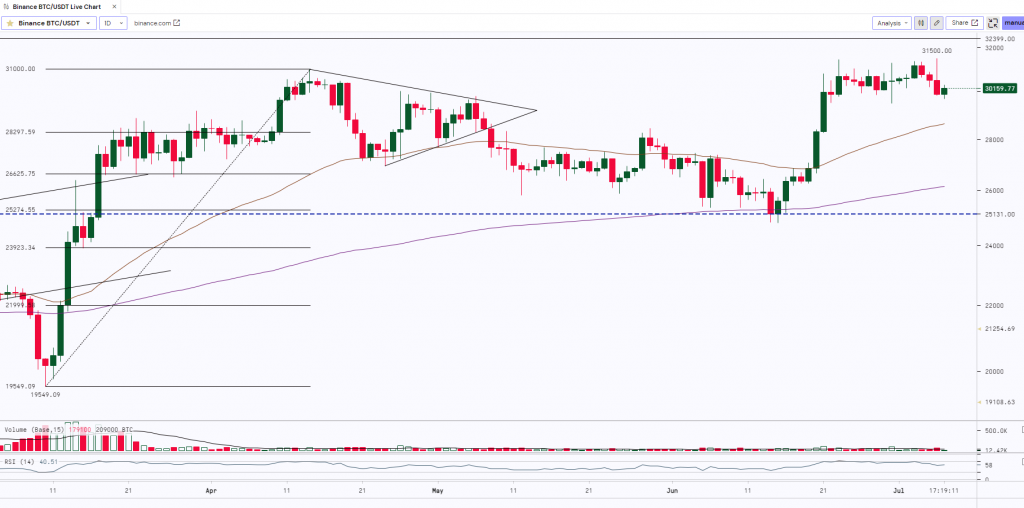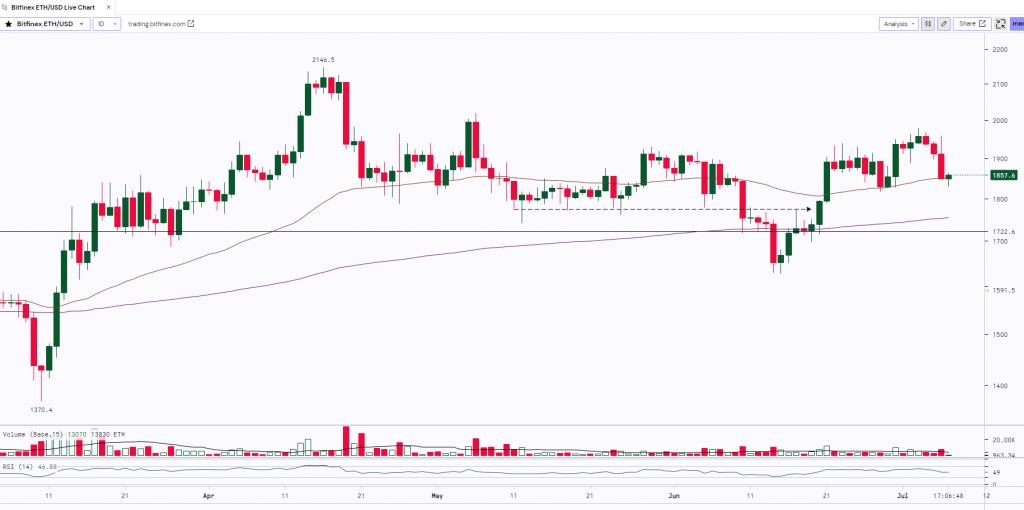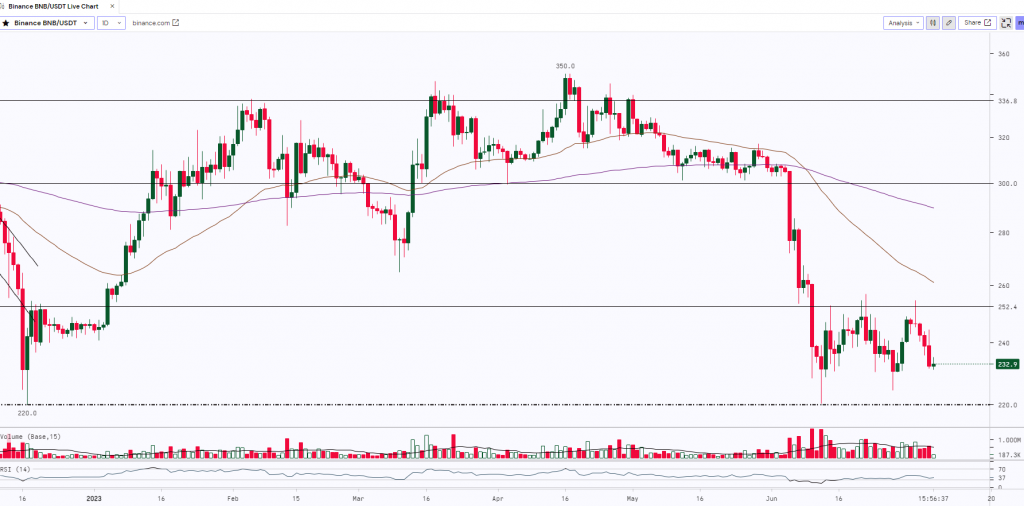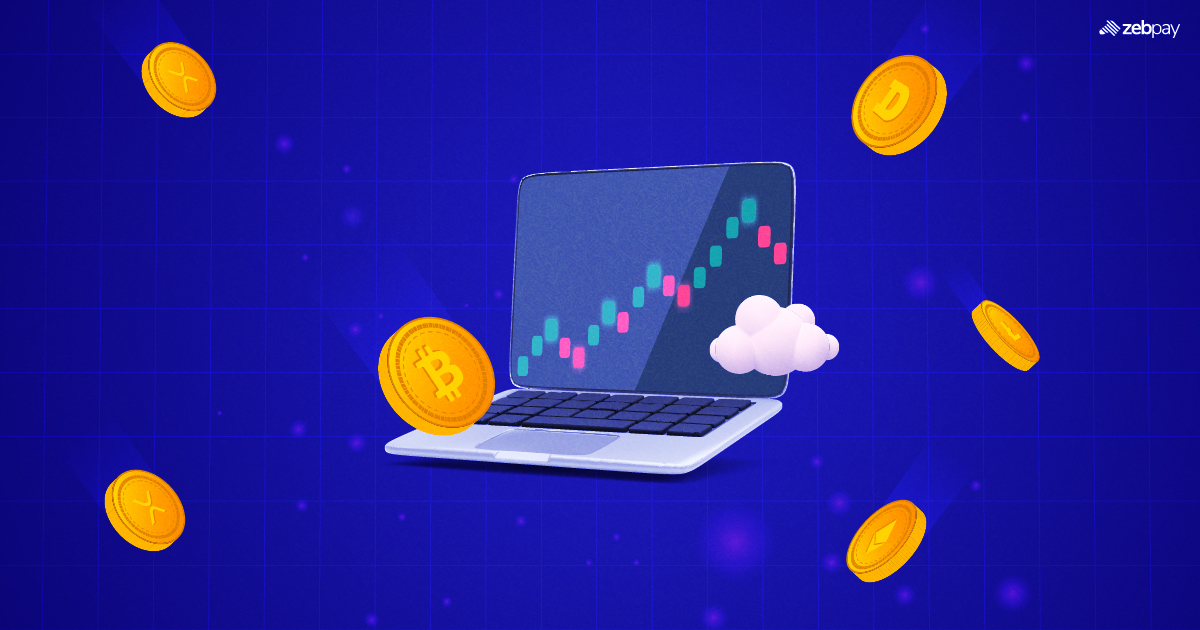In early June, the crypto market experienced a period of negative price action following the SEC’s lawsuits against major exchanges Binance and Coinbase. However, the market sentiment quickly shifted to a bullish stance with the filing of a crucial exchange-traded fund (ETF) proposal by BlackRock, the world’s largest asset management firm, on June 16. This development prompted a wave of ETF filings and sparked institutional interest in digital assets. Furthermore, the launch of EDX Markets, which is supported by prominent Wall Street entities like Fidelity Investments, Citadel Securities, and Charles Schwab, on June 20, had a positive impact on a specific sector of the market. This included Bitcoin forks such as Bitcoin Cash and Bitcoin SV, as well as other proof-of-work (PoW) crypto assets like Kaspa (KAS). The exchange started with BTC, ETH & LTC. The inclusion of BCH on the exchange contributed to an upward trend in other Bitcoin forks. Overall, these events and developments have played a role in boosting the market and generating increased interest and trading activity in various crypto assets, particularly those associated with Bitcoin forks and PoW-based assets.
Bitcoin experienced a surge in bullish momentum, pushing its price to a new high for 2023 at over $31,500 on July 6. However, this upward trend quickly reversed as investors grew concerned about potential interest rate hikes. As a result, Bitcoin’s price briefly dipped below $30,000. Adding to these concerns, traders are observing Bitcoin miners moving their holdings to exchanges, which is seen as a potential indicator of an upcoming sell-off. These factors have contributed to a more cautious sentiment in the market, with investors closely monitoring developments and potential market movements. Despite regulatory challenges in the United States, large institutions are actively pursuing Bitcoin financial instruments, indicating their confidence in the asset’s potential and the possibility of sparking a bullish trend. However, market participants anticipate a recovery in the price of Bitcoin over the long term, particularly as more financial institutions show a growing acceptance and adoption of BTC. This increased institutional involvement could potentially contribute to a positive trajectory for Bitcoin in the future.
After reaching the $1,970 level on July 3, Ether’s price encountered resistance and faced several factors that hindered its rally. These factors included the likelihood of further interest rate hikes and a more stringent regulatory environment for crypto assets. Additionally, the Ethereum network experienced withdrawals from its smart contract applications, which contributed to limiting the momentum of the June rally. One notable indicator of the decline in Ethereum’s demand is the total value locked (TVL), which measures the deposits held in Ethereum’s smart contracts. According to data, the TVL dropped by 3.1% to 13.7 million Ether in the 30 days leading up to July 4, marking its lowest level since August 2020. This decline in TVL suggests that investors may be losing interest in utilizing the Ethereum network for smart contracts or have shifted to layer-2 alternatives in search of lower transaction fees. Consequently, this reduced potential demand for the Ethereum network is viewed as bearish for Ether’s price. Despite trading within a narrow range of $1,815 to $1,975 since June 22, professional traders have increased their leveraged long positions in futures, as indicated by the long-to-short ratio. This suggests that professional traders have maintained an optimistic outlook for Ether’s price despite the current challenges and uncertainties.
On the macro front, Following the Federal Reserve’s decision to pause interest rate increases on June 14, Fed Chair Jerome Powell has indicated a commitment to tackling inflation by resuming rate hikes. Powell’s speech during the Federal Open Markets Committee (FOMC) meeting on June 14 led the market to believe that the Fed would indeed begin raising interest rates again. The correlation between crypto prices and traditional financial markets such as the Dow and S&P 500 remains strong, and many major banks continue to predict a potential recession in the United States in 2023.
While certain countries like Hong Kong and the United Arab Emirates are embracing Bitcoin and crypto assets, the regulatory environment in the United States has taken a different turn. On June 5 and June 6, the Securities and Exchange Commission (SEC) filed civil lawsuits against two of the largest centralized exchanges in the crypto industry, Binance and Coinbase. This regulatory action has had a significant impact, with Binance US experiencing a substantial decline in market share, dropping from 22% to below 1%.
Technical Outlook:
BITCOIN:

BITCOIN was trading sideways in a range from $27,500 to $26,500. The asset finally gave a breakout on the downside in the first week of June and the prices made a monthly low of $24,800. Though it went below the key level of $25,000, it failed to sustain and give a daily closing below $25k. BTC took multiple support at $25,000 (Horizontal Trendline, 200 Day Moving Average & 50% Fibonacci Retracement Level) and witnessed a sharp bounce. The asset surged almost by 27% and made a high of $31,500. Currently, the prices are consolidating and are trading in a range from $31,000 to $29,750. The bulls are struggling to sustain and close above $31,000. BTC has a strong resistance at $32,500, hence, to witness further rally it needs to break, close and sustain above the resistance level whereas $28,500 will act as a key support for the asset.
ETHEREUM:

ETH too witnessed a sharp fall in the first half of the last month and it made a monthly of $1,628.3. The asset made a ‘Bullish Harami’ pattern at the low and started trading upwards. The prices surged almost by 21% making the high of $1,978. ETH has strong resistance at the psychological level of $2,000 and the previous high of $2,146. Once the asset breaks and sustains above these resistance levels then we can expect the prices to surge up to 2,400 – 2,500 levels whereas $1,800 to $1,750 will act as a strong support.
BNB:

BNB made a ‘Tweezer Top’ candle at the recent top of $350 and it has been trading downwards since then. The asset was trying to take support at the psychological level of $300. However, the bulls failed to defend the level and it finally broke the support. After breaking the support of $300, BNB witnessed a sharp fall and made a low of $220 within eight days. The asset took the support exactly at the Previous bottom of December 2022 and didn’t break the key level of $220 and bounced back from $220.4 up to $257. Currently, it is trading in a range from $230 to $250. Breakouts below $220 or above $255 with good volumes will further decide the trend for the asset.
Monthly Snapshot:
| May | June | Last Month | Current Month | ||||
| Close | Close | % Change | High | Low | High | Low | |
| BTC | $27,219 | $30,477 | 11.97% | $29,820 | $25,875 | $31,390 | $24,797 |
| ETH | $1,874 | $1,933 | 3.15% | $2,018 | $1,742 | $1,945 | $1,624 |
| MATIC | $0.89 | $0.66 | -25.84% | $1.02 | $0.82 | $0.91 | $0.56 |
| crypto | 1m – % Vol. Change (Global) |
| BitCoin (BTC) | 13.40% |
| Ethereum (ETH) | 6.45% |
| Binance Coin (BNB) | 8.72% |
| Resistance 2 | $37,250 | $2,150 | $0.95 | $285 |
|---|---|---|---|---|
| Resistance 1 | $32,500 | $2,000 | $0.70 | $255 |
| USD | BTC | ETH | Matic | BNB |
| Support 1 | $28,500 | $1,750 | $0.50 | $220 |
| Support 2 | $25,000 | $1,600 | $0.41 | $200 |
Market Updates:
- Twitter Payments LLC, a subsidiary of Elon Musk’s Twitter social network, appears to have received its first money transmitter licenses after Michigan, New Hampshire and Missouri approved the company’s applications.
- The UAE has established itself as a pro-Web3 destination for crypto-focused companies, with over 30 free trade zones and a growing contribution to the Bitcoin mining hash rate.
- The United States Department of Homeland Security has distributed $312,219.71 in cash and 6.917 in Bitcoin Cash to Bitfinex — representing a tiny portion of the funds siphoned in the 2016 crypto exchange hack.
- Bitcoin miners made a lofty $184 million from transaction fees in the second quarter of 2023 which is a 270% increase from Q1 and far more than they pocketed throughout the entire year of 2022 — as Bitcoin’s price surged and BRC-20 tokens flourished.


